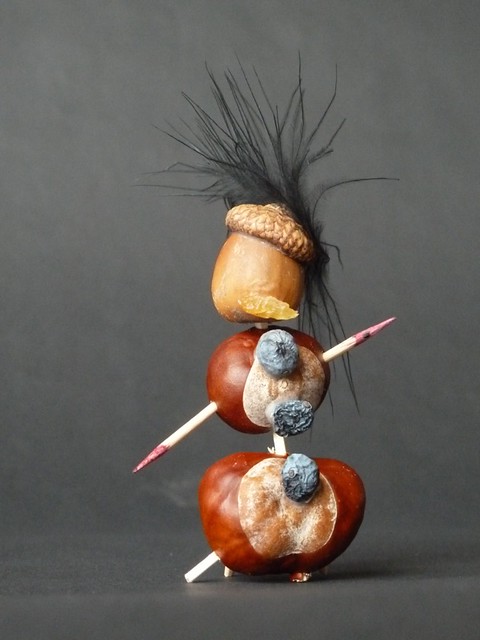In early October, many trees around here began dropping loads of beautiful, shiny brown nuts. I watched kids and their parents at the park loading bags and boxes of gathered nuts into waiting wagons. It seemed like a perfect fall activity--the kiddos go on a treasure hunt, the adults catch up on adult conversation, and everybody goes home with...nuts.
 |
| almost as fun as Easter eggs |
 |
| making off with the spoils |
So I got in on the action.
Aren't they pretty?
I read online about the nuts, called Kastanien in German, and all my German-English dictionaries indicated that these were chestnuts. Having never seen chestnuts before (that I can remember), I happily looked up recipes and began to roast the nuts.
But they were horrible. Like, blech, patooey, ack, not even going to taste it twice, nasty.
So I did even more research, and it turned out that I had picked up what we would call horse chestnuts and what the Germans call Roßkastanien or Kastanien. They are technically edible and were used in the past for medicinal purposes, but they give you the trots. (Needless to say, I was happy I only had a few nibbles!) The sweet chestnuts, the ones that we hear about roasting over an open fire, are called Maronen or Esskastanien in German. Really, the nuts look quite similar:
 |
| top row: buckeye/Kastanien, bottom row: sweet chestnuts/Maronen |
 |
| left: horse chestnut (Kastanie), right: sweet chestnut (Maroni) (source) |
So I roasted the nuts, then chopped them, ate a few, and stuck them in the fridge. They have been delicious additions to boiled potatoes, a creamy rice dish, soups, and salads. It was quite a bit of work to get them out of their shells, though, so I have since found little packets of pre-cooked vacuum-packed chestnuts at the grocery store that work just as well
My field biology at instructor at Cornell would probably be ashamed at my rusty field identification skills. I was a bit embarrassed about the whole thing! And also confused...what would so many people do with that many inedible nuts? So a searched 'Warum sammeln Kastanien?' (Why gather buckeyes?), and I found out that they often are used for crafts, especially making little figures out of buckeyes and toothpicks.
 |
| source |
 |
| a storefront in Vienna - the pastries are made with sweet chestnuts, but the figure was decorated with horse chestnuts |
Oh well--I still enjoyed them. Shiny and slightly iridescent, they sure are pretty even if they taste horrible :)




No comments:
Post a Comment